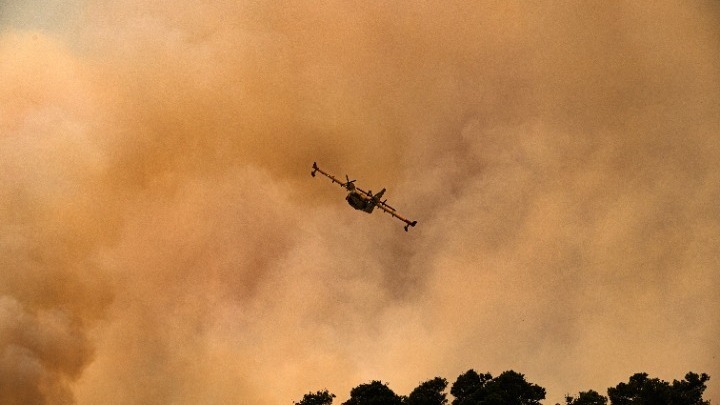
The wildfire at Dadia National Park in Evros stretched into a fifth day on Monday, threatening more destruction at the 43,000-hectare (106,000-acre) preserve. The park is considered one of the most important protected areas in Greece, Europe, and the world.
Crews battling the blaze that started on Thursday said thick smoke released by the fire had prevented water-dumping planes from entering, making it more difficult to control the blaze. The fire has destroyed well over 800 hectares (2,000 acres) of woodland, with over 300 firefighters battling the blaze. The village of Dadias was evacuated along with at least two other residential areas.
Officials said the safety of villagers was the primary concern but that treating injured animals was a high priority, as well.
Dadia National Park’s Magnificent Flora and Fauna
Dadia is among the few refuges for rare birds of prey in Europe and home to the only breeding population of black vultures in the Balkans. It hosts three out of the four vulture species of Europe (the black vulture, the griffon vulture, and the Egyptian vulture), and thirty-six of Europe’s thirty-eight species of predatory birds can also be found at Dadia National Park.
The fauna also includes 104 butterfly species, 13 amphibian species, 29 reptile species and about 65 mammal species, 24 out of which are bats.
The park’s geographical position is also important, standing at the crossroads of Asia, Europe, and Africa and close to the easternmost migration route flyway of many bird species.
Grazing, logging, and low-level wildfires in the past have actually contributed to the formation of clearings, which provide easier access for the birds of prey to their food resources.
The park area is also home to up to four hundred plant species, including twenty-five orchids.
In 1970, European scientists recognized the importance of the Dadia forest with its rocky outcrops, streams, and rivers. A decade later, the area was declared as protected. Since 2006, it has been characterized as a national park, attracting around 35,000 visitors each year, according to estimates.
Dadia is Greece’s Biggest Natura 2000 Area
Dadia National Park is also Greece’s biggest Natura 2000 area. The designation was given because it provides a network of core breeding and resting sites for rare and threatened species, as well as some rare, natural habitat types, which are protected in their own right. Natura 2000 stretches across all 27 EU countries both on land and at sea.
Officially called the Dadia-Lefkimi-Soufli Forest National Park, it is also one of the first areas in Greece to be declared as protected since a great deal of flora and fauna species found in the Balkan Peninsula, Europe, and Asia co-exist here.
See all the latest news from Greece and the world at Greekreporter.com. Contact our newsroom to report an update or send your story, photos and videos. Follow GR on Google News and subscribe here to our daily email!



